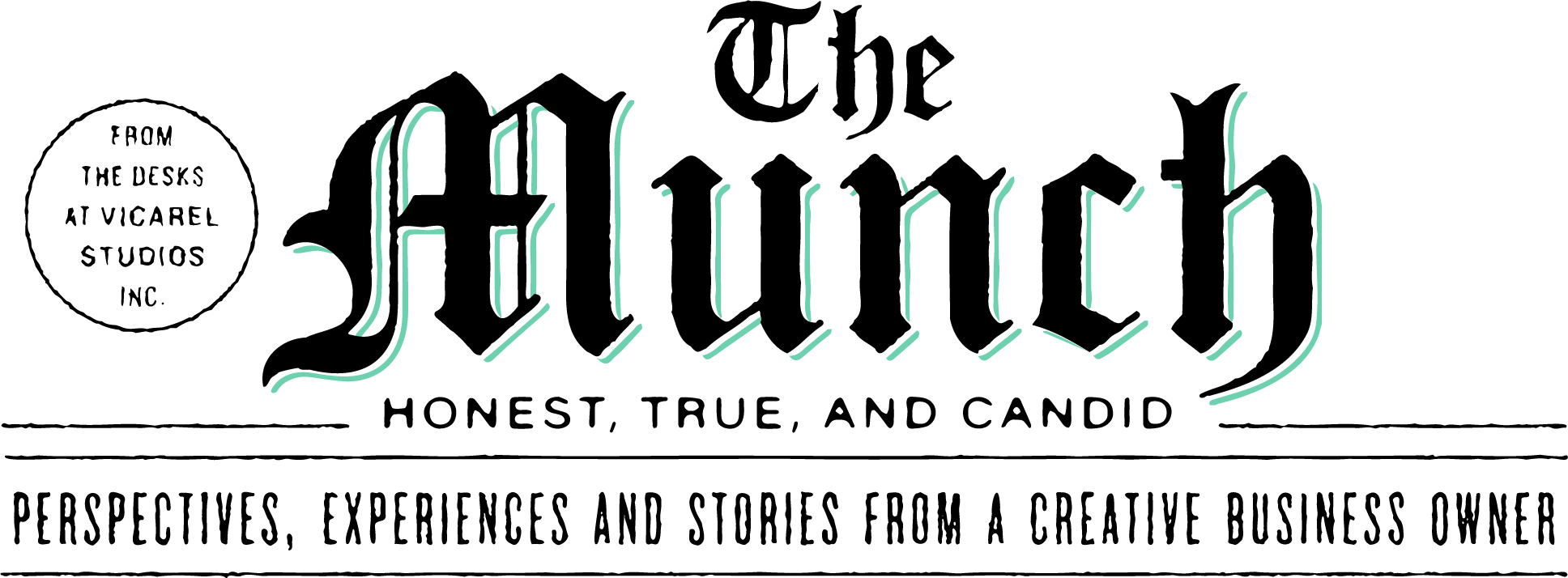What kind of insurance does a graphic designer or artist need?
Vol. 079
What kind of insurance does a graphic designer or artist need?
Insurance for graphic designers, artists and other creative business owners doesn’t need to be terrifying — let’s talk about it.
A quick bite:
I recently switched from Hiscox to NEXT business insurance once I hired my employee. Hiscox wasn’t able to receive the coverage I needed, and I learned so much through the whole process. The main thing I learned was how little I knew about the coverage I (didn’t) have! Hopefully you can learn from my mistakes.
Continue reading below…
**Please note that I am not a “professional” in regards to insurance practices. All info here in is my own understanding from a recent insurance change, and you should absolutely consult a professional when purchasing or selecting your own insurance.**
I hired a full time designer recently, and I had to update my business insurance to ensure we were properly covered. In digging into this, I actually found out that I wasn’t properly covered for murals (in an instance if someone got hurt) 😱. With that, I spiraled down a deep rabbit hole and absorbed as much information as possible about business insurance for graphic designers.
I learned A LOT on my 10 or so hours of calls, research and conversations, and I wanted to share some basics with yall so you can learn from my findings and mistakes. You absolutely should have business insurance if you’re a creative entrepreneur of any type.
If you’re wondering, “do graphic designers and artists actually need insurance?” The roundabout vague answer is that the requirements for insurance vary from state to state, business to business. But, the succinct answer is, YES! Just as you should have car insurance if you’re driving, you should have business insurance if you’re a creative business.
As a reminder, if you are creating goods or services, and getting paid to do so, you are technically a business.
Insurance for graphic designers is relatively inexpensive in contrast to how expensive being sued or on the hook for a large project flop could be. So, take this seriously!
Below I explain the types of insurance that I have for Vicarel Studios, as well as what that specific type of insurance does.
As a reminder, Vicarel Studios is a graphic design studio with a focus on branding, packaging, hand lettering and painting murals in Denver, Colorado — our insurance is catered to our location, our services, and the amount of employees. So, what you need may or may not be different.
What types of insurance should I have as a graphic designer, muralist or artist?
General Liability Insurance (good for artists, muralists, and graphic designers)
General liability insurance covers you and your company for claims involving bodily injuries and property damage that may result from your products, services or operations.
Examples when when general liability insurance would cover you:
As a muralist, if your ladder falls and breaks something when you’re painting a mural.
As an artist, you create a piece of art, and once your client hangs the art at their house, the hanging apparatus on the back is faulty and the art falls and destroys your client’s property (tv, table, etc.)
As any creative, if someone (not employed by you) gets hurt at your office or studio, whether their fault or yours.
As a muralist: if a paint can falls off your ladder and ruins property.
General liability coverage is a broad coverage that covers costs of others’ property and people other than your employees.
Professional Liability Insurance a.k.a Errors and Omissions / E&O (great for graphic designers)
E&O insurance is additional coverage outside for things not protected by traditional general liability insurance. E&O insurance protects you and your business from a client suing you for negligence and errors or omissions committed while carrying out your business activities and services.
Examples when when general liability insurance would cover you:
If you’re a graphic designer and you misspell something that goes to print (think: if you misspelled something on a huge packaging project, billboard, or run of $10,000 prints 😰)
If you’re a muralist and a design was approved, but when you finished painting it everyone realized that there was a typo.
As a graphic designer, you claim your work will help a business with XYZ, so they hire you. But, ultimately, your work doesn’t help their business, and they actually lose money.
E&O coverage is a more specialty coverage that covers costs if a client tries to sue you for things that truly might be an accident, or something out of your control.
Commercial Property Insurance
Commercial property insurance protects your physical assets (computers, cameras, hard drives, paint brushes, etc.) from fire, vandalism and theft, explosions, leaky pipes or bursts, or storms. Natural disasters such as floods and earthquakes typically aren't covered, but are able to be added separately.
Examples when when commercial property insurance would cover you:
A pipe bursts in your office and ruins your property (computer, paintings, cameras, etc.).
Someone breaks into your studio and steals your property.
Your studio catches on fire and everything you own for your business burns 🙇
Commercial property insurance covers your stuff for the unexpected. This is crucial to have!
Workers’ Compensation Insurance (if you have an employee)
Workers' compensation insurance covers your staff if they're unable to work due to a work-related injury or illness. It covers a portion of their missed payroll and covers medical expenses your employee incurs stemming from the incident.
Examples of when worker’s compensation insurance would cover you:
If an employee slips and falls, and breaks a leg.
If an employee gets hit by a falling object
If an employee gets hurt operating machinery.
Many states require employers to carry workers compensation insurance if they have any employees.
How much does insurance cost for graphic designers, artists and other creative businesses?
I use NEXT for my business insurance, and I pay:
General Liability (inclusive of E&O): $81.59 /mo
Commercial Property: $17.09 /mo
Workers Compensation: $117.0 /mo
Which equals $2,588.16 / year.
Again, these rates are specific to my business, my revenue, the value of my business assets, my location, my insurance provider etc. So, you could do the exact same work in a different state, but still pay different rates.
There are plenty of other types of insurance out there — it’s a deep, dark sea haha.
All in all — GET YOUR ASS COVERED. The price you pay is negligible compared to what you could pay if someone files a claim against your business and sues you.
Cheers!
Adam


